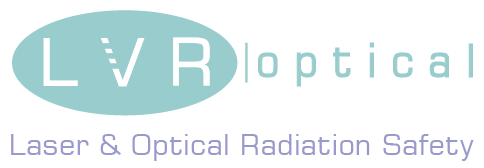
BLOG: Safe Laser Exposure for Laser Shows
We are often asked what is a safe amount of laser light to perform audience scanning with, and over the years we have seen rumours of what is safe creep up slowly as the availability of higher power lasers at lower costs has increased. Ten years ago, for instance, rumours were rife that 20mW lasers were ok to crowd scan with. A couple of years later, folklore would have it that anything below 100mW and later 200mW as being safe. In more recent times it has been suggested that anything below 0.5W or 2W is safe.
So with all these all these figures being banded around what is the truth about what is and is not safe to point towards someone’s face? Well there can be two answers to this question; none of them are safe (- likely if they are just being used willy-nilly), or all of them, (provided that they are being used in a suitable environment, and the exposure conditions are below the MPE – Maximum Permissible Exposure).
What is the appropriate MPE and how can it be determined? The applicable MPE is determined from knowing the exposure duration and how many bursts of laser energy the eye receives. Unfortunately it is not so straightforward to say that lasers below ‘x’ mW are below the MPE, for apart from anything else, MPE limits are expressed in power densities (irradiance) or energy densities; that is, the amount of power per area. On the European side of the pond we usually express the irradiance MPE in watts per square metre, while in the US it is usual to see mW per square cm quoted.
How do you know the power density of a laser? Well it is something that decreases the further you move away from the laser’s source. Therefore the power density is dependent upon distance of exposure. It is possible to predict the power density if you know the initial power and spread of the laser beam (divergence), for a given distance. In fact we have developed a free App for the iPhone/iPod/iPad, which is available in the Apple App Store that will help you perform this very function, and automatically compare with the exposure limits. As ever, this should be complemented with a physical measurement using a power meter to verify the actual exposure.
What MPE should I use? MPE is time dependent, and the amount of light that can safely enter the eye increases as the exposure duration shortens. However, current safety limits also state that if multiple short exposures are received, the MPE limit is decreased. This is where things start to get a little complicated in that most laser effects create quite varied exposure patterns to observers, and being able to determine the appropriate exposure conditions is not a trivial task.
For a single accidental exposure event the MPE is considered to be 25.4W/m^2 (or 2.5mW/cm^2 for our American friends). This equates to a power of 1mW through a 7mm aperture if measured using a standard power meter. More recently, the UK’s Health Protection Agency has advised that for intentional exposure the MPE should be lowered to 10W/m^2 (or 1mW/cm^2), which can be measured as 0.4mW through a 7mm aperture.
Therefore setting laser equipment to create such power densities goes a good way to ensuring that the MPE is not exceeded.
So returning to the original question about what is safe and not safe to point at an audience, you can see that quoting the power alone can’t provide the answer, and that you need to know the power density at the exposure distance. Which is why exposure to the 2W laser source may be ok, if the separation distance is sufficient, and the beam has wide enough spread (divergence). Conversely, exposure to the 20mW laser may be hazardous if the beam has not expanded enough by the time it reaches a person’s eye. Power figures on their own cannot tell you the answer.
© 2011 LVR Optical
